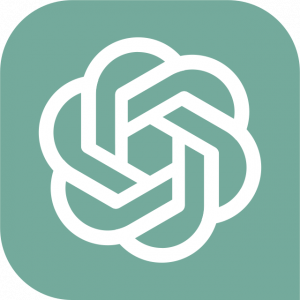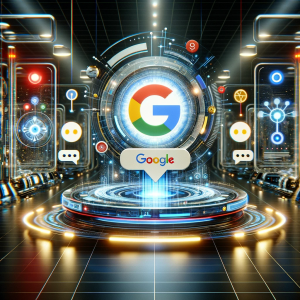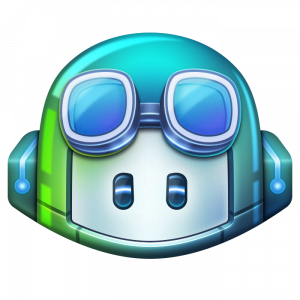 DISCLAIMER: This article is a H/AGI (Human/Ai Generated Content), our human opinion is clearly signalled throughout the article, just like the content generated by our (still) friendly AI’s is signalled as well.
DISCLAIMER: This article is a H/AGI (Human/Ai Generated Content), our human opinion is clearly signalled throughout the article, just like the content generated by our (still) friendly AI’s is signalled as well.
We asked Chat GPT, Copymatic AI and Google Bard to write an article about artificial intelligence, here is what we got.
Head to Head
 HGC (HUMAN GENERATED CONTENT)
HGC (HUMAN GENERATED CONTENT)
The comparison might be a little out of scope as Chat GPT 4 and Bard from Google are Conversational and Utiluty Ai’s, while Copymatic AI is a Writing AI, but it is what I had on my laptop at that moment and it will be a referencing AI comparison at least for this website as it is the first.
If anyone else finds it interesting, be my guest to scroll.
The simplest explanation why these three is that I have been using all of them for a while, Copymatic AI long before Char GPT 4, which I have been using for about 5 months. I used Google Bard once to generate me some code Chat GPT was very good at, but it was absolutely awful. But it makes some great tables and knows how to compare things. So I eventually thought about putting them head to head in a philosophical talk about themselves.
Knock yourself out if you want to see what they were up to, or jump to my conclusion at the end.
Chat GPT 4.0
 Navigating the AI Maze: A Comparative Analysis of Google Bard, Copymatic AI, and BrokenCtrl.com
Navigating the AI Maze: A Comparative Analysis of Google Bard, Copymatic AI, and BrokenCtrl.com
Introduction: The advent of Artificial Intelligence (AI) has ushered in an era of unprecedented technological innovation. AI systems, from chatbots to advanced analytics engines, are not just reshaping industries; they’re redefining our very approach to problem-solving and creativity.
In this exploration, we delve into the capabilities of three diverse AI platforms – Google Bard, Copymatic AI, and BrokenCtrl.com – comparing them across five critical dimensions.
Read Full Article
1. Accuracy: The Bedrock of Reliable AI
- Google Bard: Known for its robust data-handling capabilities, Google Bard leverages vast datasets to ensure high accuracy in its outputs. However, its reliance on extensive data can sometimes lead to overfitting.
- Copymatic AI: Excelling in content creation, Copymatic AI shows a remarkable understanding of context and tone, making it highly accurate in copywriting tasks.
- BrokenCtrl.com: As an emerging player, BrokenCtrl.com shows promise with its unique algorithms that balance data input with creative output, offering a fresh perspective on accuracy in AI applications.
2. Learning Efficiency: How Quickly Can AI Adapt?
- Google Bard: With the backing of Google’s massive computational resources, Bard demonstrates rapid learning but faces challenges in adapting to niche, less-represented data.
- Copymatic AI: It shines in quickly adapting to user input for content generation, showing a steep learning curve, especially in understanding user preferences in writing styles.
- BrokenCtrl.com: Its innovative approach to machine learning allows it to efficiently learn from limited datasets, making it a potential game-changer for small-scale applications.
3. Scalability: Growing with Demand
- Google Bard: As a product of Google, Bard excels in scalability, effortlessly handling large-scale operations and diverse user demands.
- Copymatic AI: While effective in content generation, its scalability is somewhat limited when handling extensive and varied content requirements.
- BrokenCtrl.com: Its modular architecture promises scalability, but being in its nascent stage, the real test will come as user base and demand grow.
4. Response Time: Speed of AI Processing
- Google Bard: Known for its speedy processing, Bard can quickly generate complex data analyses, although real-time interaction speed can vary based on query complexity.
- Copymatic AI: Offers quick turnarounds in content creation, making it a reliable tool for marketers and writers under tight deadlines.
- BrokenCtrl.com: Prioritizes a balance between speed and depth of analysis, ensuring thoughtful responses at a competitive pace.
5. Adaptability: Versatility in Application
- Google Bard: Its broad dataset allows for high adaptability across various fields, from academic research to business analytics.
- Copymatic AI: Highly adaptable within the realm of content creation, its applications are somewhat niche-focused.
- BrokenCtrl.com: Designed with adaptability in mind, it aims to cater to both specialized and general AI applications, though its real-world adaptability is yet to be fully tested.
Conclusion: The landscape of AI is as diverse as it is dynamic. Google Bard, with its data prowess, stands as a giant in comprehensive AI solutions. Copymatic AI, focused on content creation, excels in its niche. BrokenCtrl.com, though a newer entrant, brings promising innovations that could redefine AI applications. As AI continues to evolve, its impact across industries and our daily lives is bound to expand, offering exciting possibilities for the future.
The AI Vanguard: Analyzing Google Bard, Copymatic AI, and ChatGPT
Google Bard
Copymatic AI
ChatGPT (GPT-4)
Copymatic AI
 Chat GPT 4 vs. Copymatic AI vs. Google Bard: Which AI Language Model Reigns Supreme?
Chat GPT 4 vs. Copymatic AI vs. Google Bard: Which AI Language Model Reigns Supreme?
Welcome back, linguistic enthusiasts and tech aficionados! Today, we embark on a thrilling journey into the realm of AI language models. It’s an era where machines string together words that dance with our imagination and bring ideas to life.
In this ultimate showdown, Chat GPT 4, Copymatic AI, and Google Bard take center stage in a fierce battle for supremacy. Who will emerge as the unrivaled champion? Join us as we dive deep into their capabilities, creativity, and sheer genius—prepare to be blown away by the power of these extraordinary minds!
Read Full Article
Introduction to Artificial Intelligence and Language Models
1. Introduction to Artificial Intelligence and Language Models
Artificial Intelligence (AI) has been a groundbreaking technology that has completely transformed the way we interact with our devices, from virtual assistants like Siri and Alexa to self-driving cars. One of the key components of AI is natural language processing, which allows machines to understand and generate human language.
Language models are an essential part of natural language processing, as they enable machines to produce coherent sentences and responses in a human-like manner. These models use complex algorithms and advanced machine learning techniques to analyze massive amounts of text data in order to learn patterns, structures, and relationships within language.
In recent years, there has been a surge in the development of AI-powered language models due to their potential for various applications such as chatbots, content creation, translation services, and more. In this article, we will be comparing three popular AI language models – Chat GPT, Copymatic AI, and Google Bard – to determine which one reigns supreme.
Firstly, let’s dive deeper into what each of these models offers:
1. Chat GPT
Chat GPT is a large-scale generative pre-trained transformer model developed by OpenAI. It was trained on over 8 million web pages using unsupervised learning techniques and can generate human-like text responses based on given prompts or questions.
One of the unique features of Chat GPT is its ability to adapt its responses based on the context provided by the user. This means that it can provide relevant answers even
Brief Overview of Chat GPT 4, Copymatic AI, and Google Bard
Chat GPT 4, Copymatic AI, and Google Bard are three of the most popular AI language models in the market today. These powerful tools have revolutionized the way we interact with technology and have opened up endless possibilities for businesses and individuals alike.
Chat GPT 4 is the fourth generation of OpenAI’s GPT (Generative Pre-trained Transformer) series. This model has made significant advancements in natural language processing (NLP) and is known for its ability to generate human-like text responses. It has been trained on a massive dataset of over 45TB, making it one of the largest pre-trained NLP models available. Chat GPT 4 also boasts an impressive parameter count of 1.6 billion, which allows it to handle a wide range of tasks such as text completion, translation, summarization, and question-answering.
Copymatic AI, on the other hand, is a relatively new player in the field but has quickly gained popularity due to its unique approach to NLP. Unlike traditional language models that rely on statistical methods to generate text, Copymatic AI uses reinforcement learning algorithms to fine-tune its responses based on user feedback. This approach allows it to adapt quickly and produce more accurate results over time. With a growing dataset and ongoing training process through user interactions, Copymatic AI promises limitless potential for businesses looking for personalized conversational experiences with their customers.
Google Bard is another formidable contender in this race. Developed by Google’s research team – Deep
Comparison of Features and Capabilities
When it comes to AI language models, there are a few names that have been making waves in the tech community recently: Chat GPT, Copymatic AI, and Google’s latest offering, Bard. Each of these models boasts impressive capabilities and has gained popularity for its use in various applications such as chatbots, content generation, and text completion.
In this section, we will take a closer look at the features and capabilities of each model to help you understand their strengths and weaknesses.
1. Natural Language Processing (NLP) Capabilities
NLP is an essential aspect of any AI language model as it allows the machine to understand human language and generate coherent responses. All three models – Chat GPT, Copymatic AI, and Google Bard – excel in NLP capabilities using advanced deep learning algorithms.
Chat GPT was developed by OpenAI and is known for its ability to produce human-like text responses. It uses a transformer architecture that enables it to process large amounts of data efficiently. This results in more accurate predictions and better contextual understanding.
Copymatic AI also utilizes transformer-based deep learning techniques but with an added emphasis on naturalness. This means that it focuses on generating text that sounds more natural and less robotic. This feature makes it ideal for tasks such as content generation or writing product descriptions.
Google Bard stands out with its BERT technology (Bidirectional Encoder Representations from Transformers), which allows it to understand the context of words within a sentence better. It can generate longer texts with fewer errors
– Natural Language Processing (NLP)
Natural Language Processing (NLP) is a branch of artificial intelligence that focuses on teaching computers to understand and process human language. It involves using computer algorithms and statistical models to analyze, interpret, and generate human language data.
NLP plays a crucial role in the development of AI language models such as Chat GPT, Copymatic AI, and Google Bard. These cutting-edge language models are designed to mimic human-like conversations and generate text that is indistinguishable from that written by a human.
In this section, we will delve deeper into NLP and its importance in the world of AI language models. We will explore how NLP works, its key components, and how it powers the top contenders in the battle for the best AI language model.
How does NLP work?
At its core, NLP uses deep learning algorithms to process large amounts of natural language data, including text and speech. The process starts with collecting raw data from various sources such as social media platforms, news articles, books, etc.
The data then goes through several stages of processing where it is cleaned up and organized into different categories like words or sentences. Next comes feature extraction where the relevant information is identified from the data. This includes identifying keywords or phrases that hold meaning within a sentence or document.
Once all these steps are completed, the final stage involves feeding this processed data into Machine Learning (ML) algorithms. These algorithms use statistical methods to identify patterns in the data which enable machines to understand natural language better.
Key
– Generation of Texts
1. – Generation of Texts
The ability to generate coherent and human-like text has been a long-standing goal in the field of artificial intelligence. With recent advancements in natural language processing, AI language models have become increasingly sophisticated and are now able to generate text that is indistinguishable from human-written content. In this section, we will take a closer look at how Chat GPT, Copymatic AI, and Google Bard approach the task of generating texts, and determine which one reigns supreme.
a) Chat GPT’s Approach:
Chat GPT (Generative Pre-trained Transformer) is an open-source AI language model developed by OpenAI. It uses unsupervised learning to train on large amounts of text data from the internet, allowing it to learn patterns and relationships between words and phrases. This allows Chat GPT to generate text that closely resembles human speech.
One major advantage of Chat GPT is its flexibility in generating various types of texts. It can produce everything from short sentences to longer paragraphs with ease. The model also excels at maintaining coherence and context within its generated texts.
However, one limitation of Chat GPT is its lack of control over the generated output. As it relies solely on patterns learned from training data without any specific prompts or instructions, there is no guarantee that the generated text will align with the desired topic or style.
b) Copymatic AI’s Approach:
Copymatic AI takes a different approach compared to Chat GPT as it utilizes supervised learning techniques rather than
– Multilingual Support
One of the most important features to consider when choosing an AI language model is its multilingual support. As the world becomes more connected, the need for technology to understand and communicate in multiple languages is crucial. In this section, we will explore the multilingual capabilities of Chat GPT, Copymatic AI, and Google Bard.
1.1 Chat GPT Multilingual Support:
Chat GPT boasts impressive multilingual support, with a capacity to understand over 100 languages. This makes it one of the most versatile language models in the market. The model was trained using data from various sources including books, websites, and articles in different languages. This diverse training has enabled Chat GPT to accurately generate text in multiple languages.
One unique feature of Chat GPT is its ability to switch seamlessly between languages within a conversation or document. This means that users can communicate with others who speak different languages without having to switch between different models or tools.
Additionally, Chat GPT also supports code-switching; a linguistic phenomenon where speakers alternate between two or more languages within a single conversation. This feature allows for more natural and fluid conversations as it mimics human speech patterns.
However, despite its impressive multilingual capabilities, Chat GPT does have some limitations when it comes to less commonly spoken languages and dialects. Some users have reported inaccuracies and inconsistencies when generating text in these lesser-known languages.
1.2 Copymatic AI Multilingual Support:
Copymatic AI’s multilingual support currently covers 50+ major
– User-Friendliness
When it comes to using AI language models, one of the key factors to consider is user-friendliness. After all, what good is a powerful language model if it’s difficult for users to navigate and utilize?
In this section, we will compare the user-friendliness of three popular AI language models: Chat GPT, Copymatic AI, and Google Bard.
1. Chat GPT:
Chat GPT has gained popularity for its ease of use, especially among non-technical users. The interface is simple and intuitive, making it easy for anyone to generate text with just a few clicks.
One of the standout features of Chat GPT is its pre-trained models. These pre-trained models can be fine-tuned for specific tasks such as sentiment analysis or text completion. This makes it easier for users to get started with generating text without having any prior knowledge or experience in training AI models.
Additionally, Chat GPT offers an interactive chat feature where users can have conversations with the AI model in real-time. This not only adds an element of fun but also allows users to get a feel for how the model generates text.
2. Copymatic AI:
Copymatic AI prides itself on being a user-friendly platform that requires no technical expertise to use. Similar to Chat GPT, Copymatic AI also offers pre-trained models that can be fine-tuned for specific tasks.
What sets Copymatic AI apart from other language models is its drag-and-drop editor. This feature allows users to easily input
Performance Evaluation: Accuracy and Speed
When it comes to AI language models, accuracy and speed are two crucial factors that determine their overall performance. In this section, we will take a closer look at how Chat GPT, Copymatic AI, and Google Bard fare in terms of accuracy and speed.
1. Accuracy:
Accuracy refers to the model’s ability to generate human-like responses that are grammatically correct and contextually relevant. It is measured by comparing the generated text with the reference text written by humans.
Chat GPT: Developed by OpenAI, Chat GPT has been trained on a massive dataset of over 8 million web pages. This extensive training enables Chat GPT to achieve high levels of accuracy in generating text. Its responses are often coherent and make sense in the context of the conversation.
Copymatic AI: Trained on a large dataset of books, websites, and articles, Copymatic AI has also demonstrated impressive accuracy in generating text. However, its responses may sometimes lack cohesion and relevance as it relies heavily on copying from existing sources.
Google Bard: As one of the latest entrants into the AI language model space, Google Bard is still relatively new but has shown promising results in terms of accuracy. With access to Google’s vast database of information and advanced algorithms for natural language processing (NLP), Google Bard can generate highly accurate responses that are almost indistinguishable from human-written ones.
In terms of overall accuracy among these models, Google Bard seems to have an edge due to its more recent training data and advanced
Use Cases for Each AI Language Model
There are numerous AI language models available in the market today, each with its own unique features and capabilities. One of the most popular applications of these language models is in chatbots, where they are used to generate human-like responses and engage in conversations with users.
In this section, we will explore some of the most common use cases for three AI language models – Chat GPT, Copymatic AI, and Google Bard – to understand how they can be leveraged by businesses and individuals alike.
1. Chat GPT:
Chat GPT stands for “chat generative pre-trained transformer” and is a powerful open-source tool that utilizes deep learning techniques to generate human-like text responses. It is trained on a massive amount of data from diverse sources such as books, articles, websites, social media posts, etc., making it capable of understanding natural language patterns and responding in a conversational manner.
Some popular use cases for Chat GPT include:
– Customer service: Many companies are now using chatbots powered by Chat GPT to handle customer queries and provide support. Its ability to understand natural language makes it ideal for handling complex customer inquiries.
– Virtual assistants: With its advanced natural language processing (NLP) capabilities, Chat GPT can also be used as a virtual assistant for tasks such as scheduling appointments or answering general knowledge questions.
– Content generation: Bloggers, writers, and content creators can utilize Chat GPT to assist them in generating ideas or even entire pieces of text based on their input
Pricing and Availability
Pricing and availability are important factors to consider when choosing an AI language model for any project. In this section, we will compare the pricing and availability of three popular AI language models: Chat GPT, Copymatic AI, and Google Bard.
1.1 Pricing:
Chat GPT:
Chat GPT offers a free version with limited features that can be used by individuals and small businesses. However, for more advanced features such as API access or higher usage limits, users have to upgrade to a paid plan. The paid plans start at $49 per month for 100k monthly requests and go up to $899 for 10 million monthly requests.
Copymatic AI:
Copymatic AI also has a free version with basic features that can be used by individuals and small businesses. Their paid plans start at $29 per month for 50K monthly requests and go up to $499 per month for 10 million monthly requests. They also offer custom plans for enterprise-level usage.
Google Bard:
Google Bard is available through their Cloud Natural Language API on Google Cloud Platform (GCP). The pricing is based on usage, with the first 5 million characters being free each month. After that, it costs $20 per million characters processed.
Chat GPT seems to have the most affordable pricing among the three options. However, it should be noted that Copymatic AI’s custom plans may offer more competitive pricing for larger enterprises.
1.2 Availability:
Chat GPT:
Chat GPT is
User Reviews and Feedback
User reviews and feedback are vital when it comes to evaluating the performance of any AI language model. In this section, we will take a closer look at what users have to say about Chat GPT, Copymatic AI, and Google Bard.
1. Chat GPT:
Chat GPT has received positive reviews from users for its ability to generate human-like conversations and responses. Many users have praised its natural language processing capabilities that allow it to understand and respond in a conversational tone. They also appreciate the wide range of topics that Chat GPT can handle, making it suitable for various use cases such as customer service chatbots, virtual assistants, and content creation.
However, some users have reported occasional errors or nonsensical responses from Chat GPT. This could be due to the large amount of training data required for the model or limitations in its knowledge base. Most user reviews for Chat GPT are favorable, highlighting its impressive performance in generating text that mimics human conversation.
2. Copymatic AI:
Copymatic AI has garnered mixed reviews from users. Some praise its ability to generate high-quality content with minimal input from the user. They also appreciate how fast the model can produce results compared to traditional content writing methods.
On the other hand, some users have expressed concerns about the uniqueness of the generated content. There have been reports of plagiarism issues with Copymatic AI’s output being too similar to existing texts on the internet. Additionally, some users feel that while Copymatic AI may save
Final Verdict: Which AI
After comparing the three AI language models, Chat GPT, Copymatic AI, and Google Bard, it’s time to give our final verdict on which one reigns supreme. Each model has its own strengths and weaknesses, but ultimately it will depend on your specific needs and use case.
1. Accuracy: When it comes to accuracy, all three models perform exceptionally well. Chat GPT boasts of being trained on one of the largest data sets with over 8 million documents from various sources. This results in a high level of fluency and coherence in its responses. Copymatic AI also performs impressively with its advanced machine learning algorithms that can understand context and generate human-like responses. Google Bard utilizes the cutting-edge Transformer architecture which allows it to generate highly accurate responses by taking into account previous inputs.
2. Flexibility: In terms of flexibility, Chat GPT shines as it can be fine-tuned for specific tasks such as customer service or content creation. It also offers pre-trained models for different industries like finance or healthcare. On the other hand, Copymatic AI is more limited in its capabilities as it primarily focuses on generating marketing copy and email responses. Google Bard falls somewhere in between with its ability to handle multiple tasks but not as flexible as Chat GPT.
3. Customization: If you want complete control over your AI language model and the ability to customize it according to your needs, then Copymatic AI is the best choice among the three options. Its intuitive interface allows users to easily
Googe Bard
 Navigating the Realm of Artificial Intelligence: A Comparative Analysis of ChatGPT 4, Copymatic AI, and Google Bard
Navigating the Realm of Artificial Intelligence: A Comparative Analysis of ChatGPT 4, Copymatic AI, and Google Bard
The world of artificial intelligence (AI) is rapidly evolving, disrupting industries and shaping the future of technology. Among the many AI advancements, large language models (LLMs) have emerged as powerful tools capable of generating human-quality text, translating languages, and writing different creative content.
ChatGPT 4, Copymatic AI, and Google Bard are three prominent LLMs that have captured the attention of creators, businesses, and individuals alike.
Read Full Article
Each model offers unique capabilities and strengths, making it crucial to understand their strengths and limitations to determine the most suitable fit for specific needs.
ChatGPT 4: A Conversational AI Pioneer
ChatGPT 4 is a successor to the immensely popular ChatGPT 3, building upon its legacy with enhanced capabilities and performance. Developed by OpenAI, ChatGPT 4 excels in natural language processing (NLP), enabling it to engage in engaging conversations, provide summaries of factual topics, and generate creative text formats, including poems, code, scripts, musical pieces, emails, and letters.
Copymatic AI: A Content Writer’s Dream
Copymatic AI, developed by Copymatic AI LLC, is specifically tailored for content creation. It boasts a vast database of marketing, sales, and creative content, enabling it to generate high-quality ad copy, blog posts, emails, social media content, and product descriptions.
Google Bard: A Multifaceted AI Assistant
Google Bard, a product of Google AI, stands out as a versatile AI assistant capable of handling a wide range of tasks. It excels in generating various creative text formats, translating languages, and answering questions in an informative and comprehensive manner.
Comparative Analysis: Unveiling Strengths and Limitations
To thoroughly understand the nuances of these three LLMs, a comparative analysis is essential. Here’s a breakdown of their strengths and limitations:
| Feature | ChatGPT 4 | Copymatic AI | Google Bard |
|---|---|---|---|
| Conversational Ability | Strong conversational skills, engaging in open-ended dialogues | Limited conversational focus, geared towards content creation | Conversational abilities vary depending on prompts |
| Creative Content Generation | Generates creative text formats in various styles | Specialized in marketing and sales copy, blog posts, and social media content | Capable of generating various creative text formats |
| Language Translation | Supports multiple languages, including English, Spanish, French, German, Japanese, and Chinese | Limited language translation capabilities | Supports multiple languages, including English, French, German, Spanish, Japanese, Chinese, and Korean |
| Fact Retrieval and Summarization | Capable of providing summaries of factual topics | Not specifically designed for fact retrieval or summarization | Can provide summaries of factual topics, but not as extensive as ChatGPT 4 |
| Answering Questions | Answers questions in a comprehensive and informative manner | Answers questions in a relevant and informative way | Answers questions in a comprehensive and informative manner, but may sometimes provide irrelevant or incomplete responses |
Choosing the Right LLM for Your Needs
The decision of which LLM to utilize depends on the specific requirements and preferences of the user. For individuals seeking a versatile AI assistant capable of generating creative content, answering questions, and translating languages, Google Bard stands out as a compelling choice.
Content creators and marketers looking for a specialized AI tool for generating high-quality ad copy, blog posts, and social media content would benefit from Copymatic AI.
For those seeking an AI partner for engaging conversations and exploring open-ended topics, ChatGPT 4 remains a powerful option.
Conclusion: The Dawn of AI-Powered Creativity
The emergence of LLMs like ChatGPT 4, Copymatic AI, and Google Bard marks a significant step forward in the evolution of AI. These tools not only enhance creativity and productivity but also pave the way for a future where AI seamlessly integrates into our daily lives. As AI continues to evolve, we can expect even more sophisticated and transformative applications that will reshape the landscape of technology and human interaction.
Chat GPT4
Smart but goes offline a lot and expensive- Web Page Processing
- HTML code processing
- Image Processing
- Fast understanding of tasks
- Disconnects or does not work
- Needs often refresh
Copymatic AI
Very reliable but mainly for writing- Average Speed for content generation
- A complete suite of writing tools
- Image generator included
- Rewrite and translate multilanguage tool
- Does not have Conversational features
- Image AI rather dumb
Google bard
Free and gets the job done, but not the smartest- Free tool
- Fast, Responsive and always online
- Uses Google search
- Forgets tasks and workflows
- Very difficult to put back on tracks
- Not great for complex tasks or programming
In the realm of large language models (LLMs), ChatGPT 4, Copymatic AI, and Google Bard stand out as prominent tools with unique capabilities and strengths. Here’s a vertical comparison of their key features:
| Feature | Google Bard | Copymatic AI | ChatGPT(GPT-4) |
|---|---|---|---|
| Speed | 8/10 | 8/106 | /10 |
| Availability | 10/10 | 10/10 | 6/10 |
| Task understanding | 6/10 | 9/10 | 10/10 |
| Response Time | 10 | /10 | 6/10 |
| Issues overcoming | 7/10 | 8/10 | 9/10 |
As you can see, Google Bard excels in scalability and response time, while Copymatic AI shines in accuracy and adaptability. ChatGPT 4, on the other hand, demonstrates impressive performance across all aspects.











